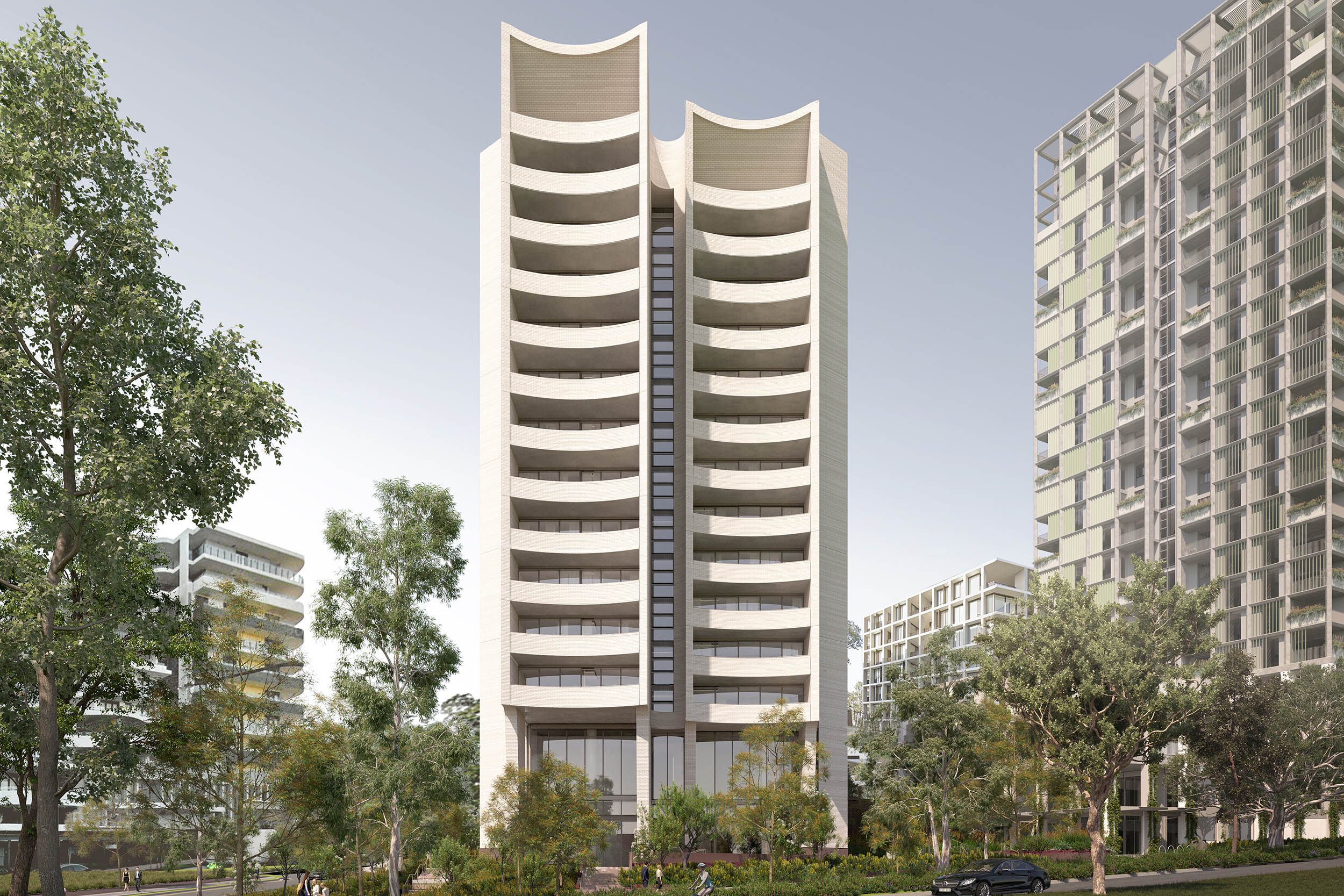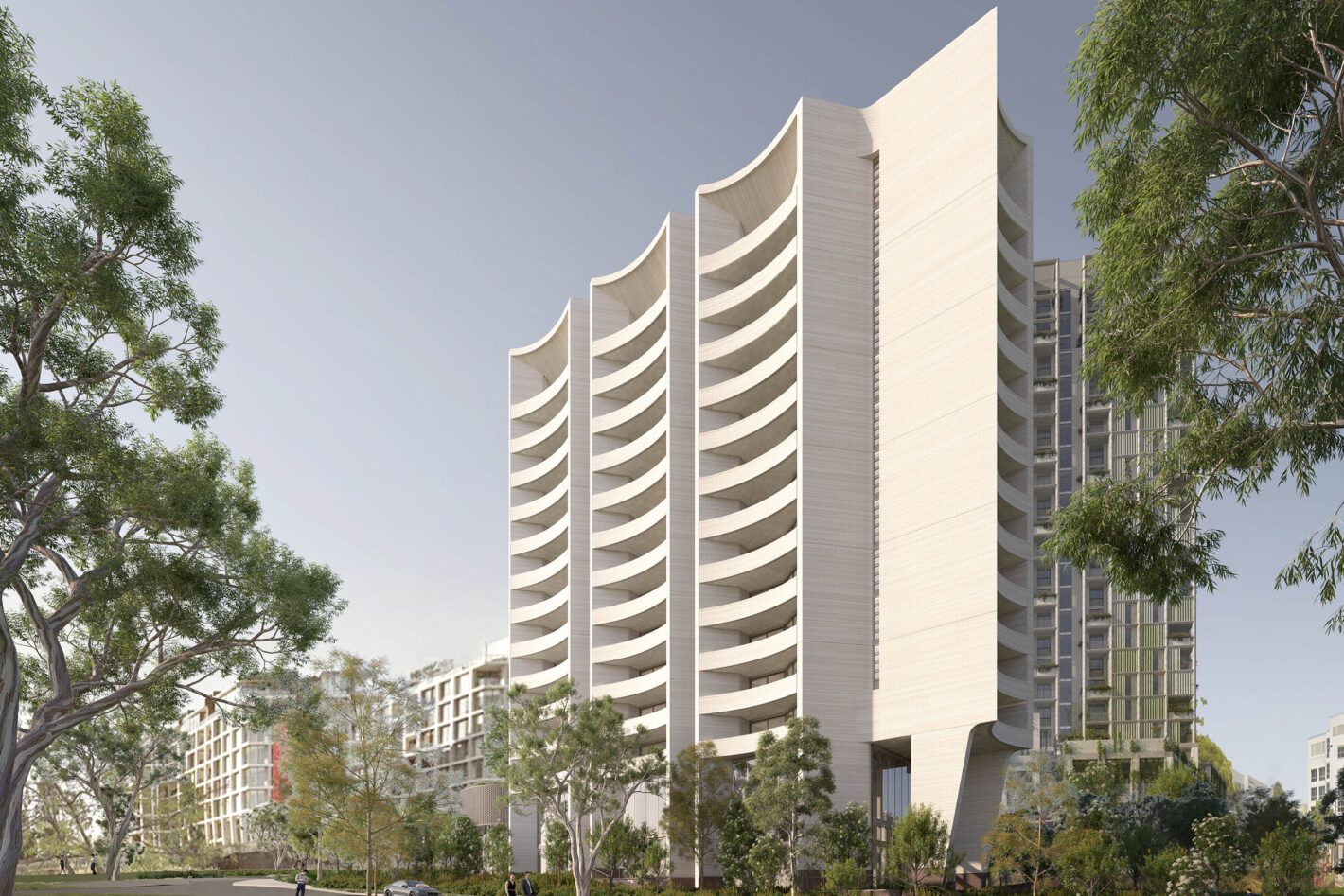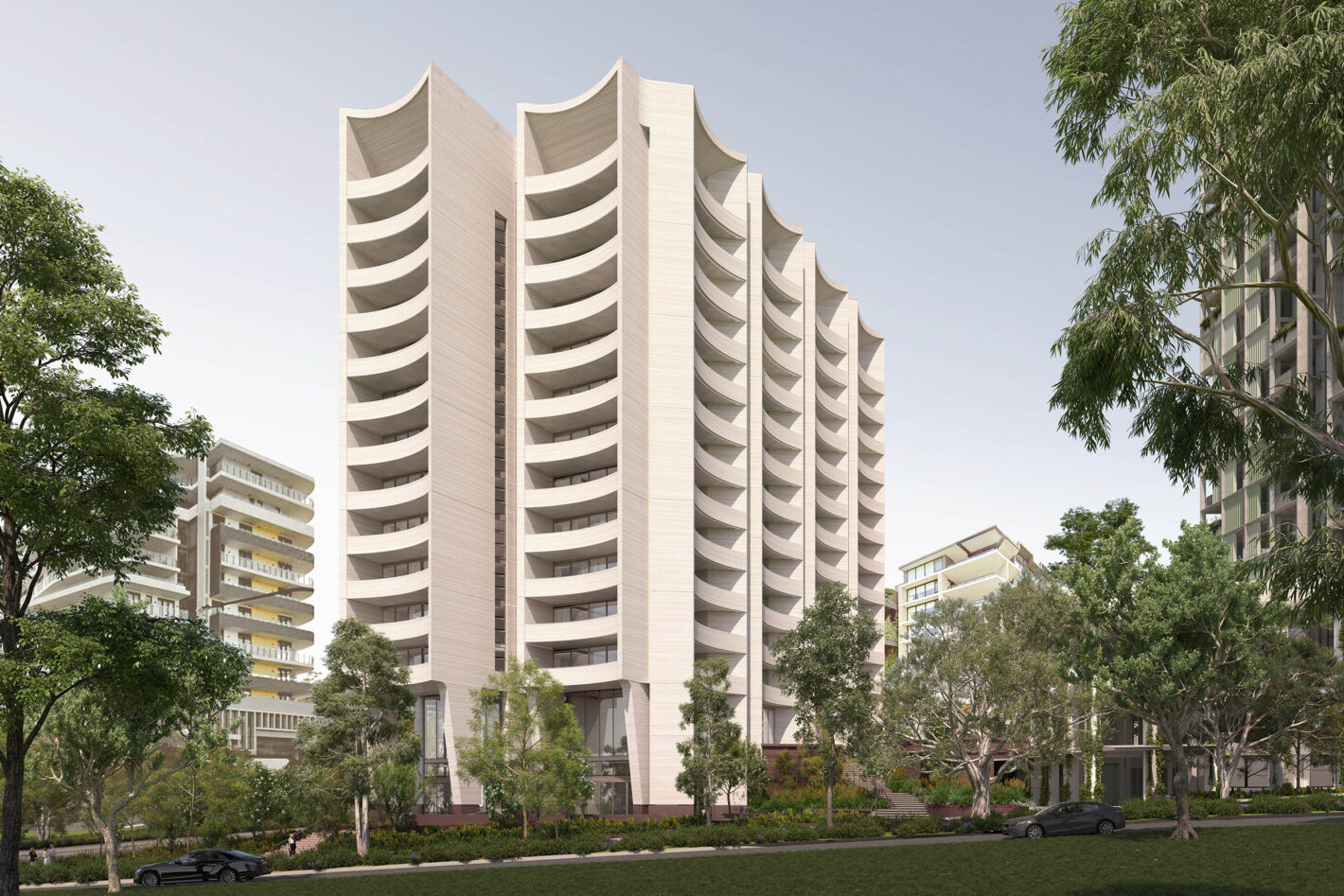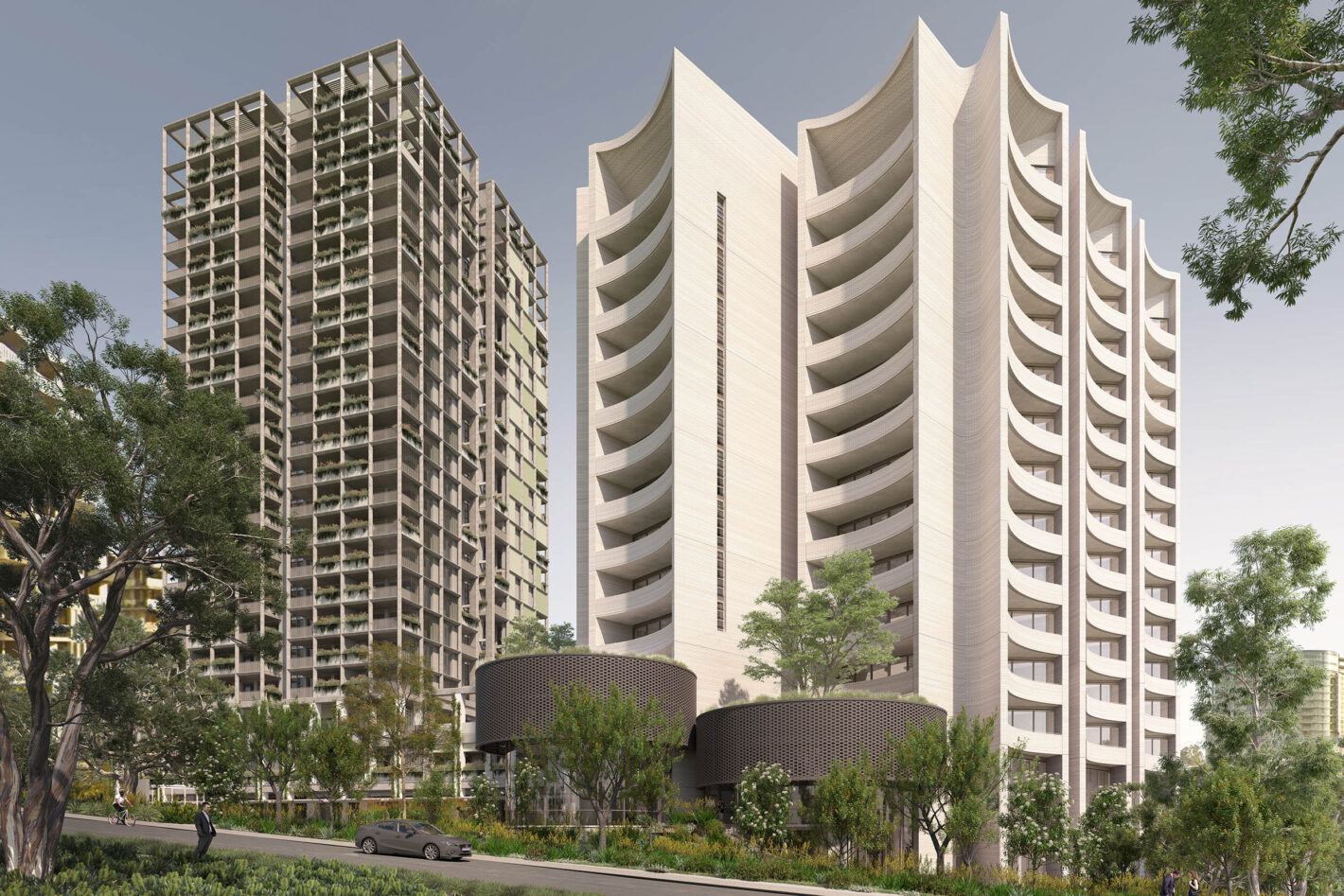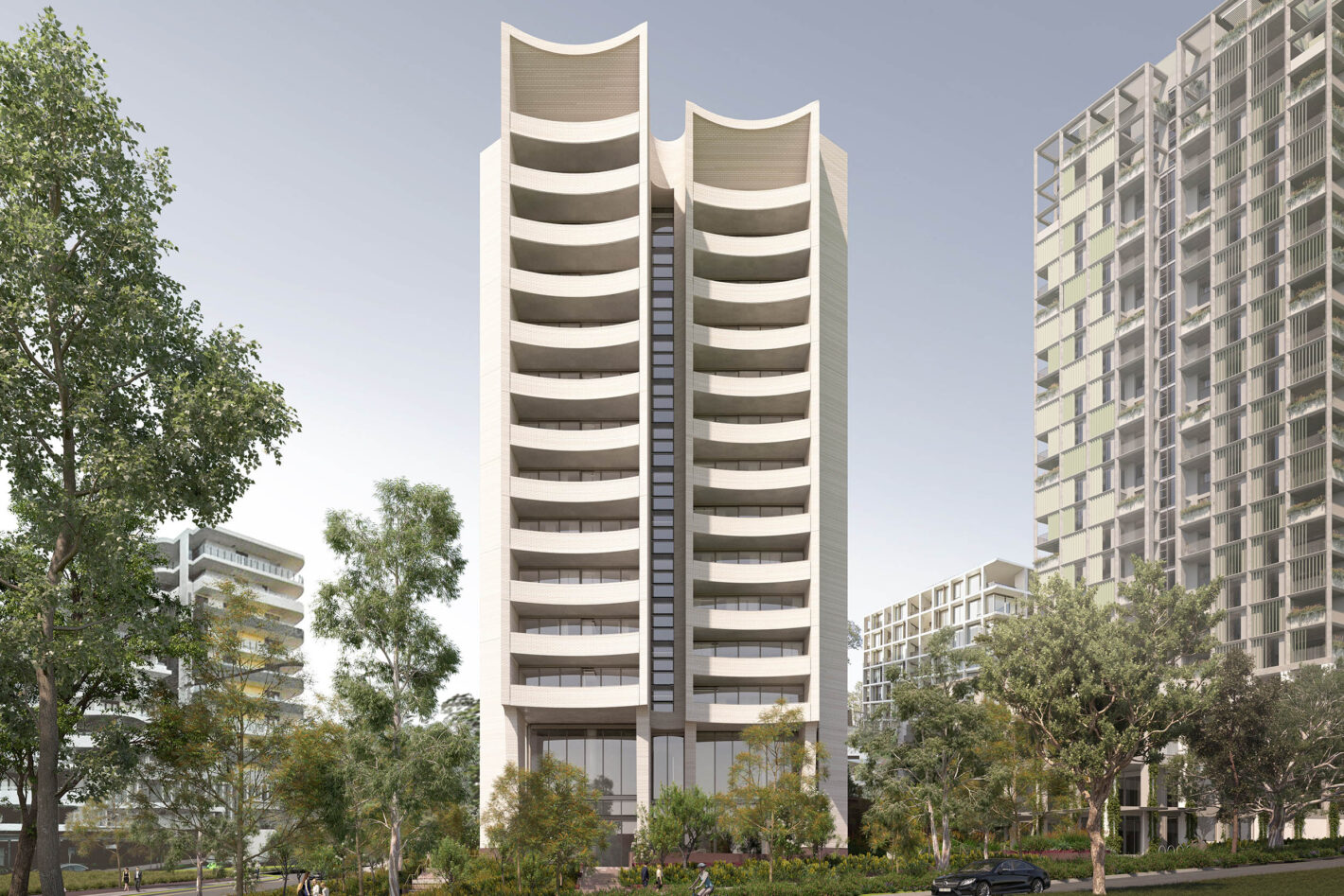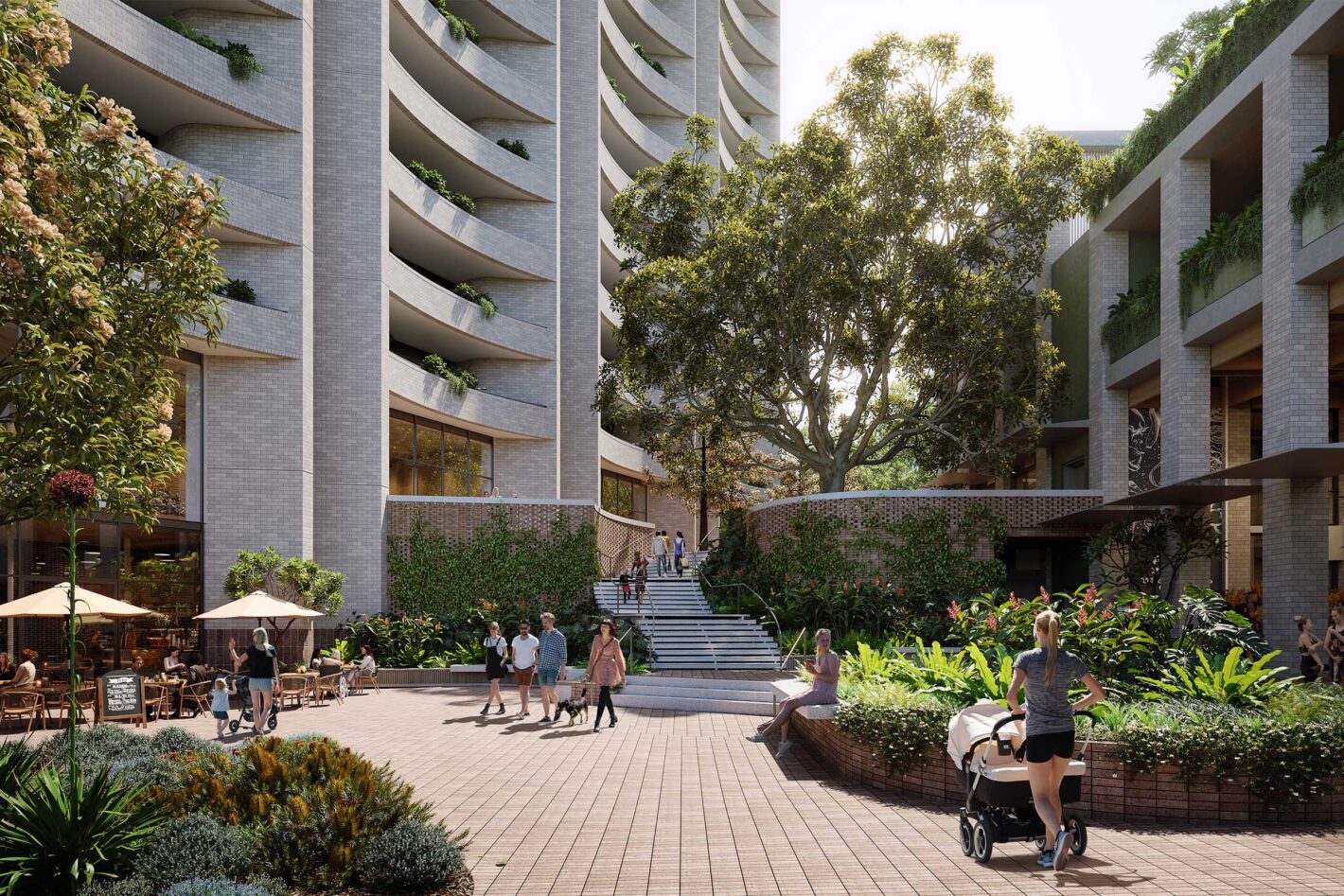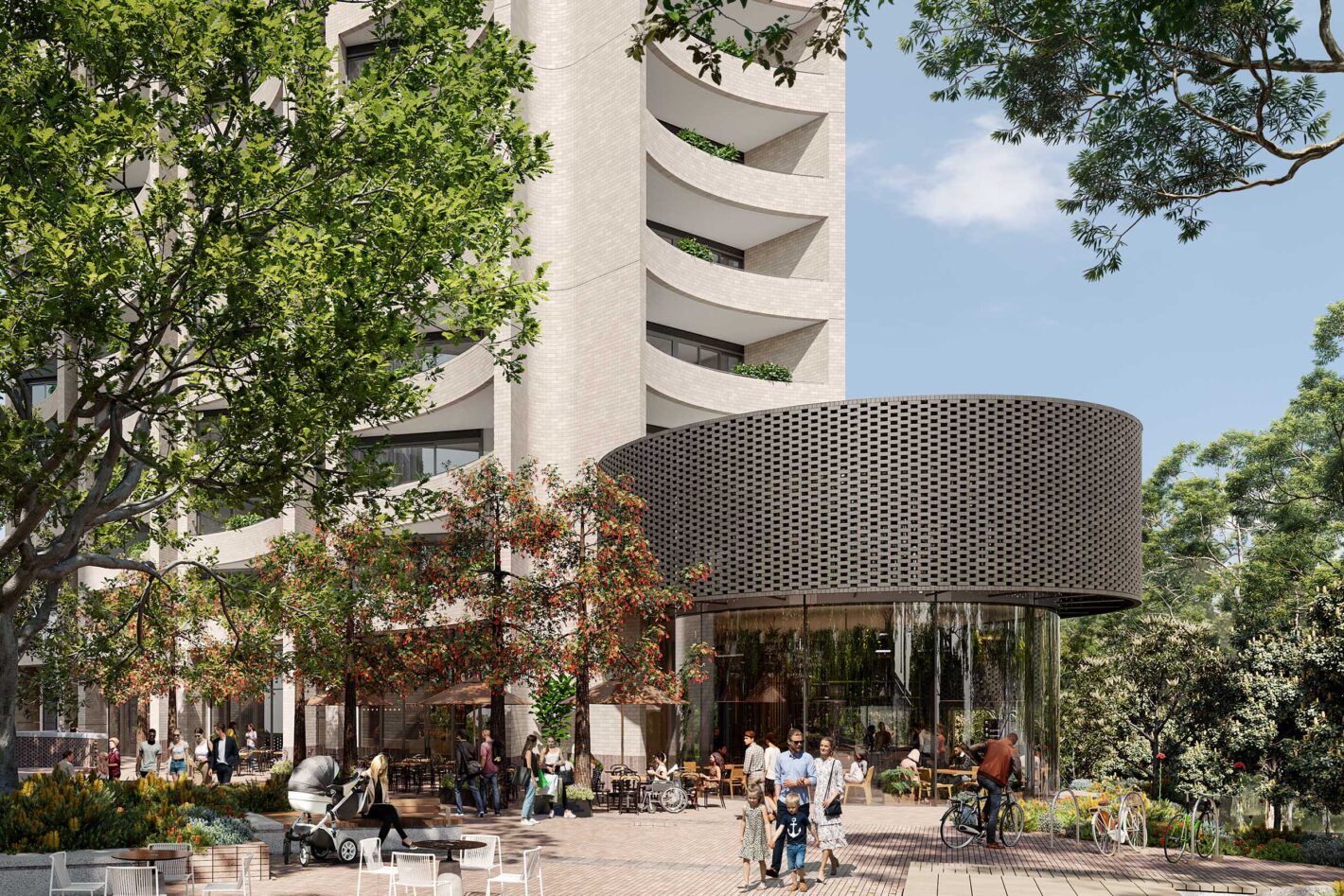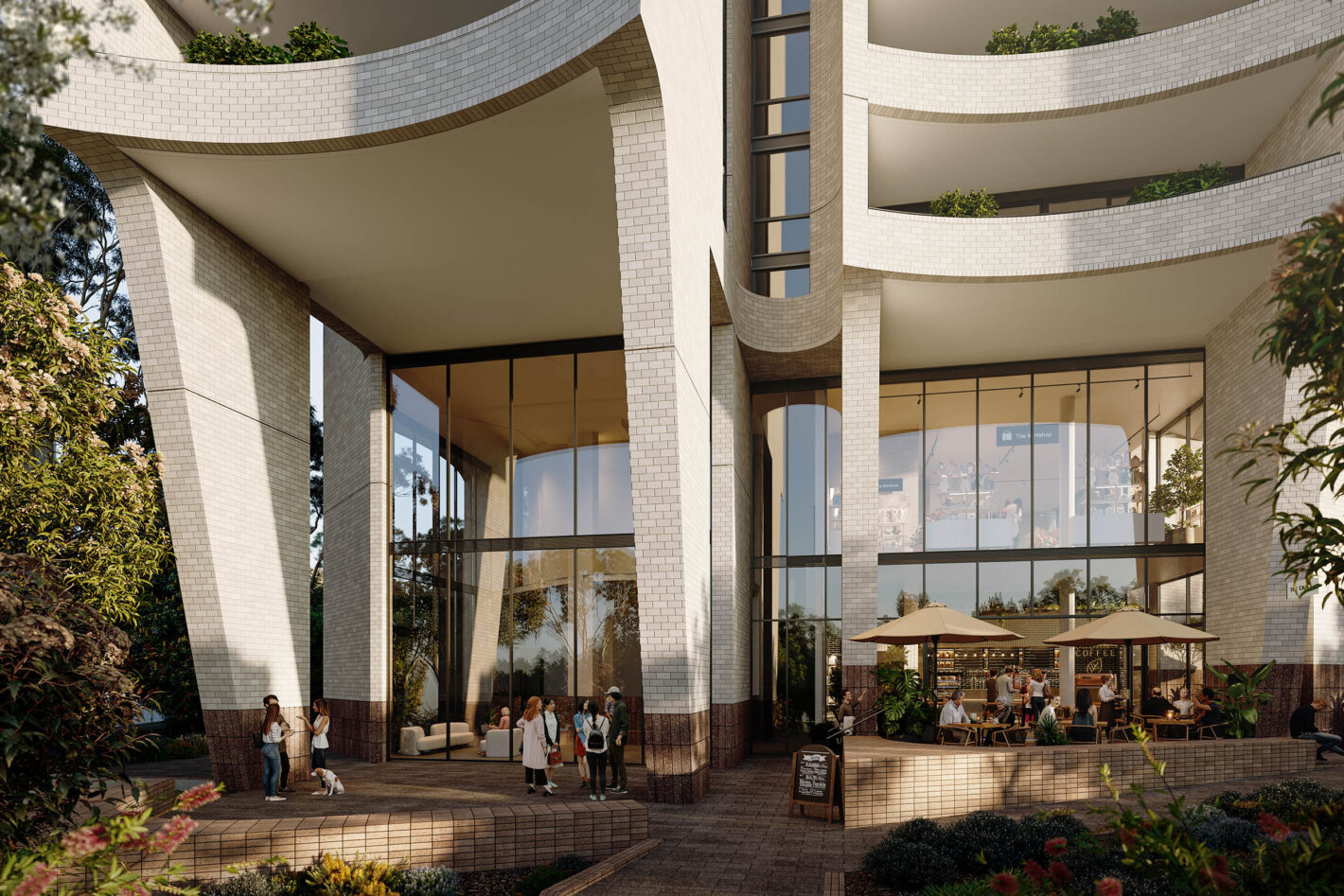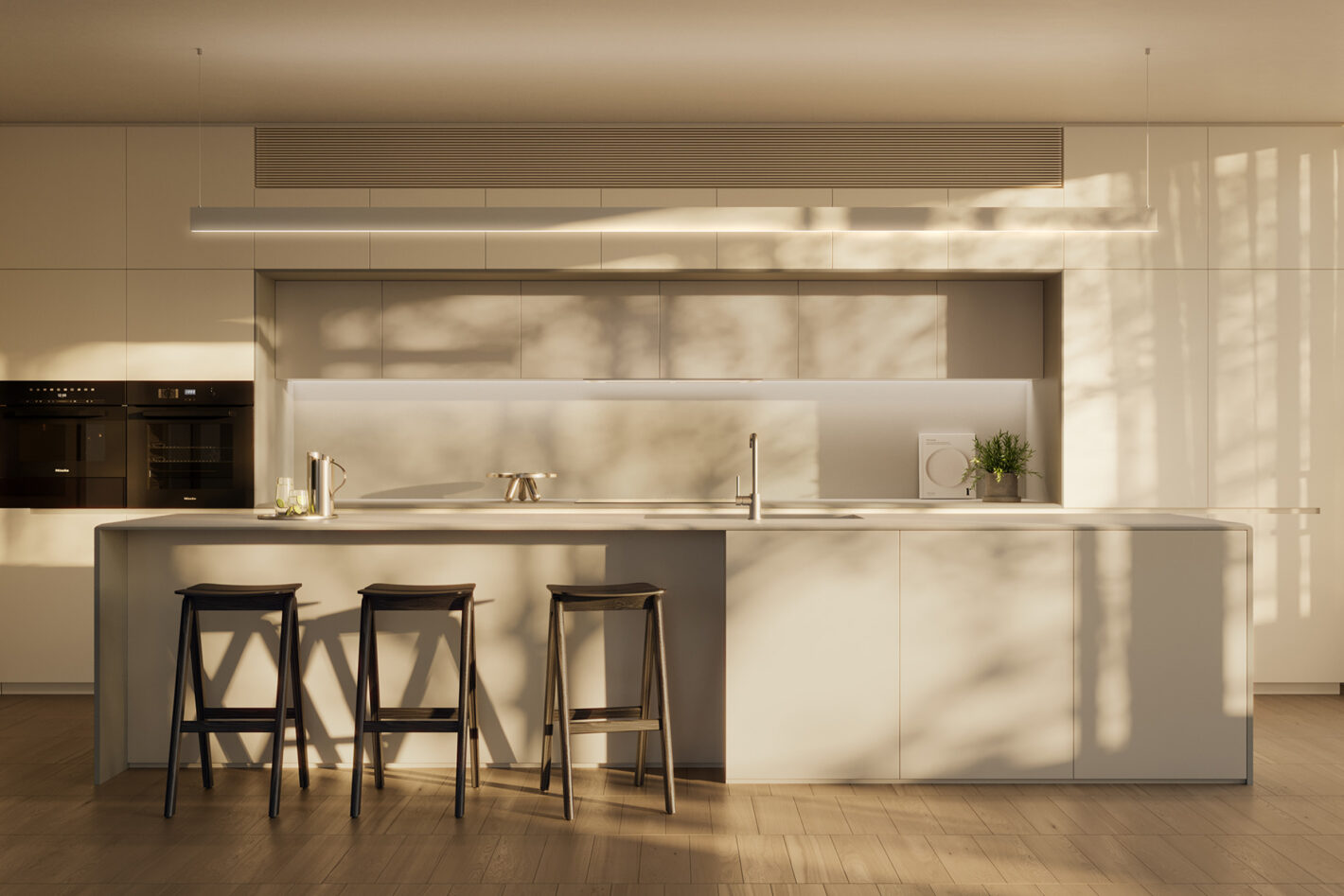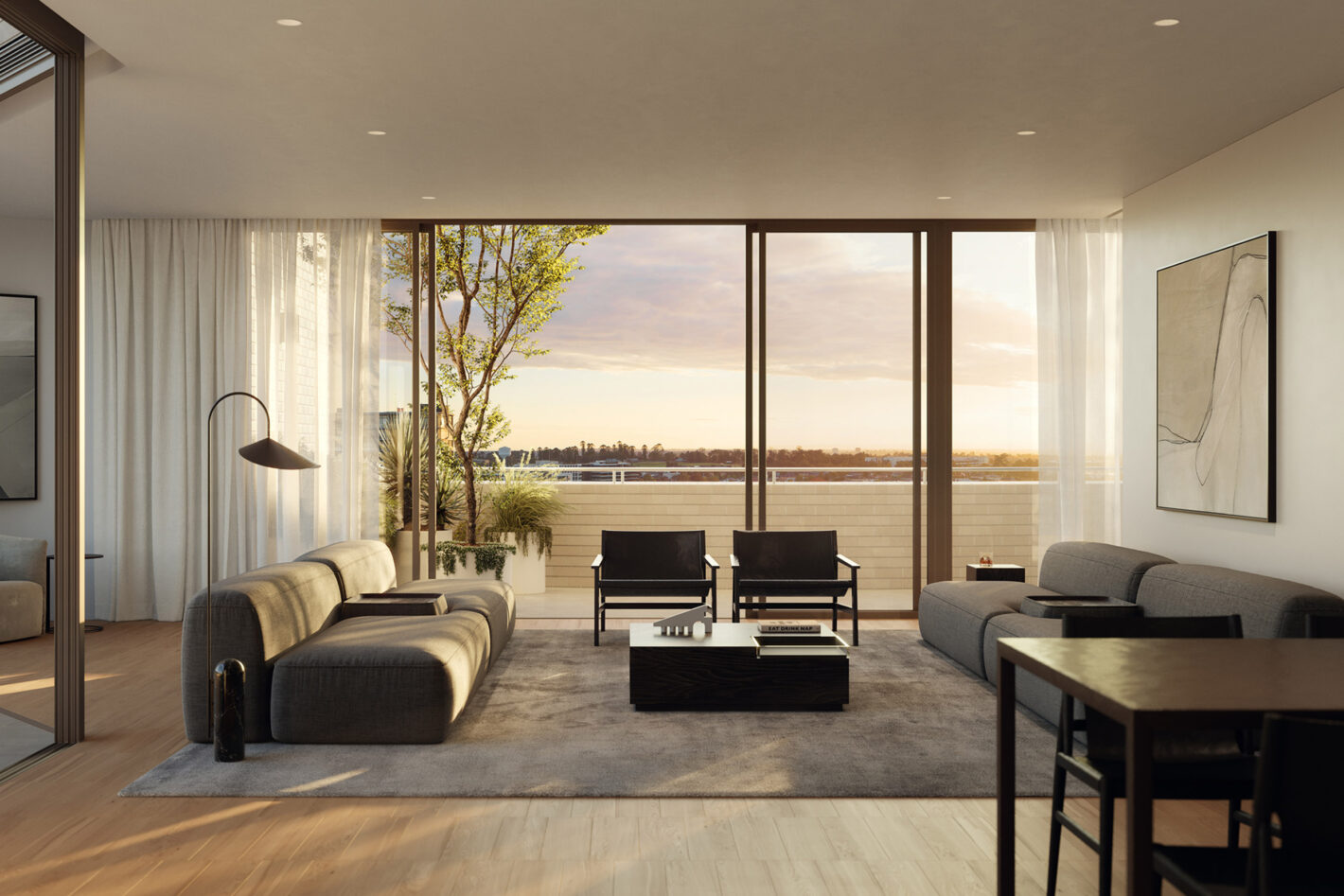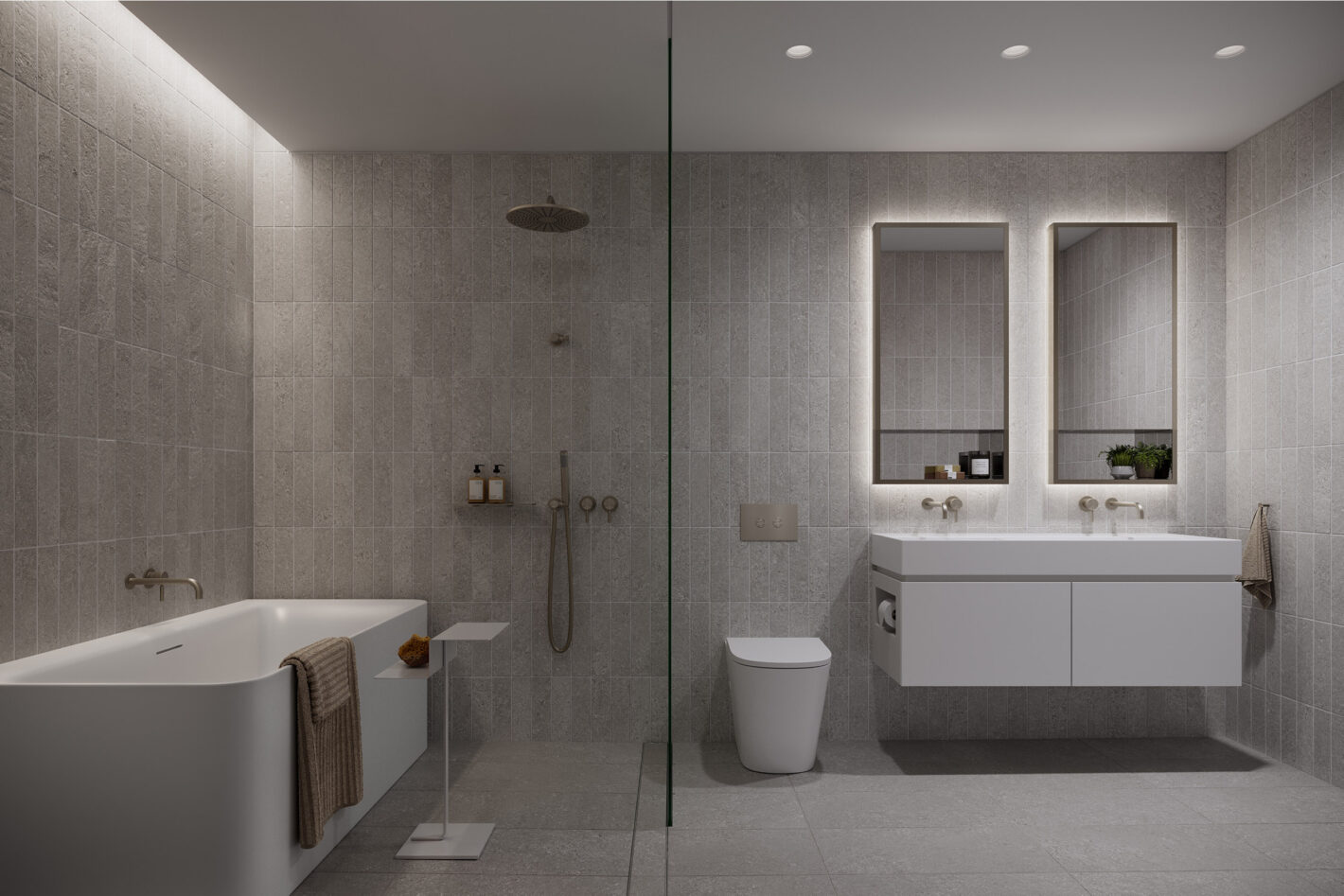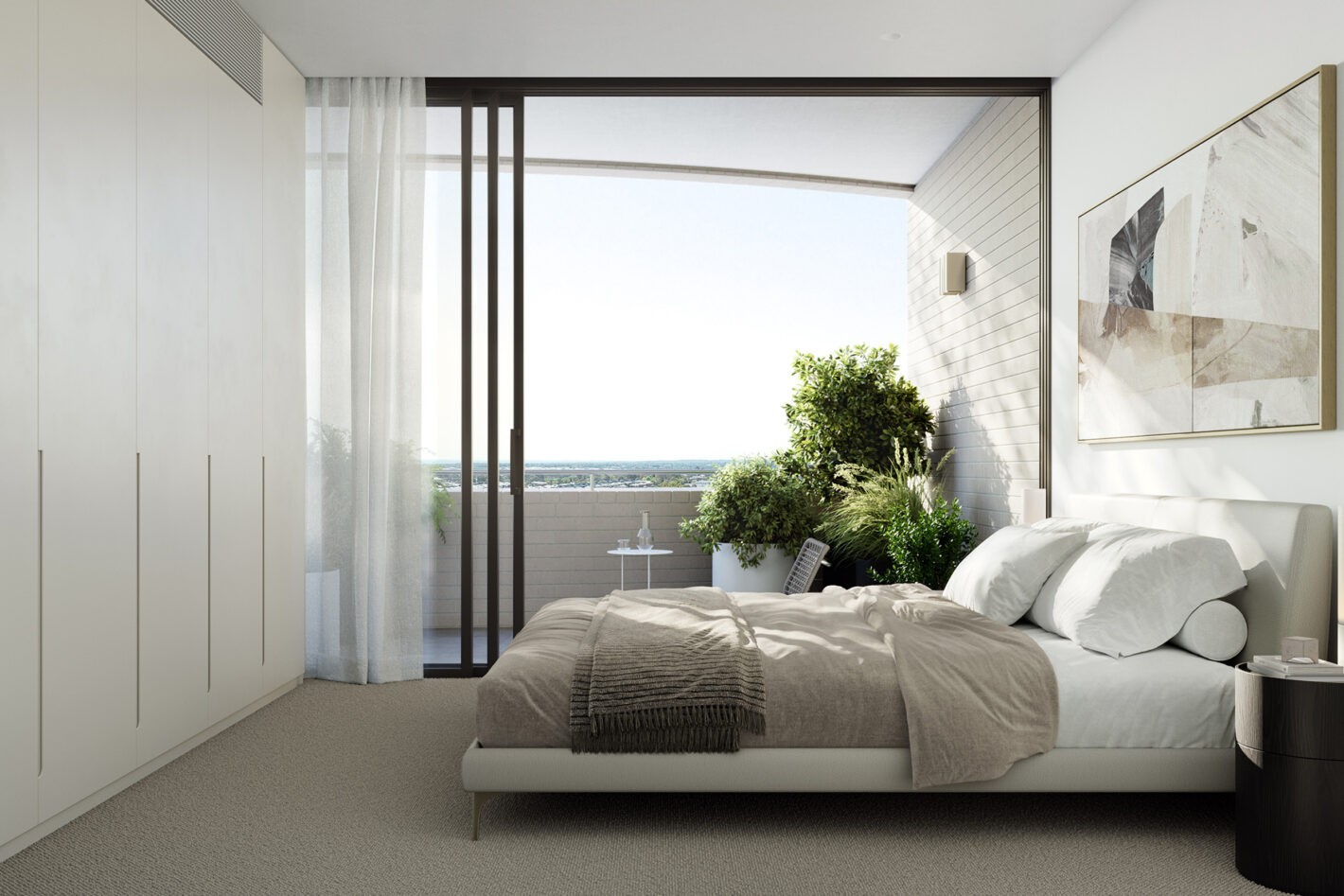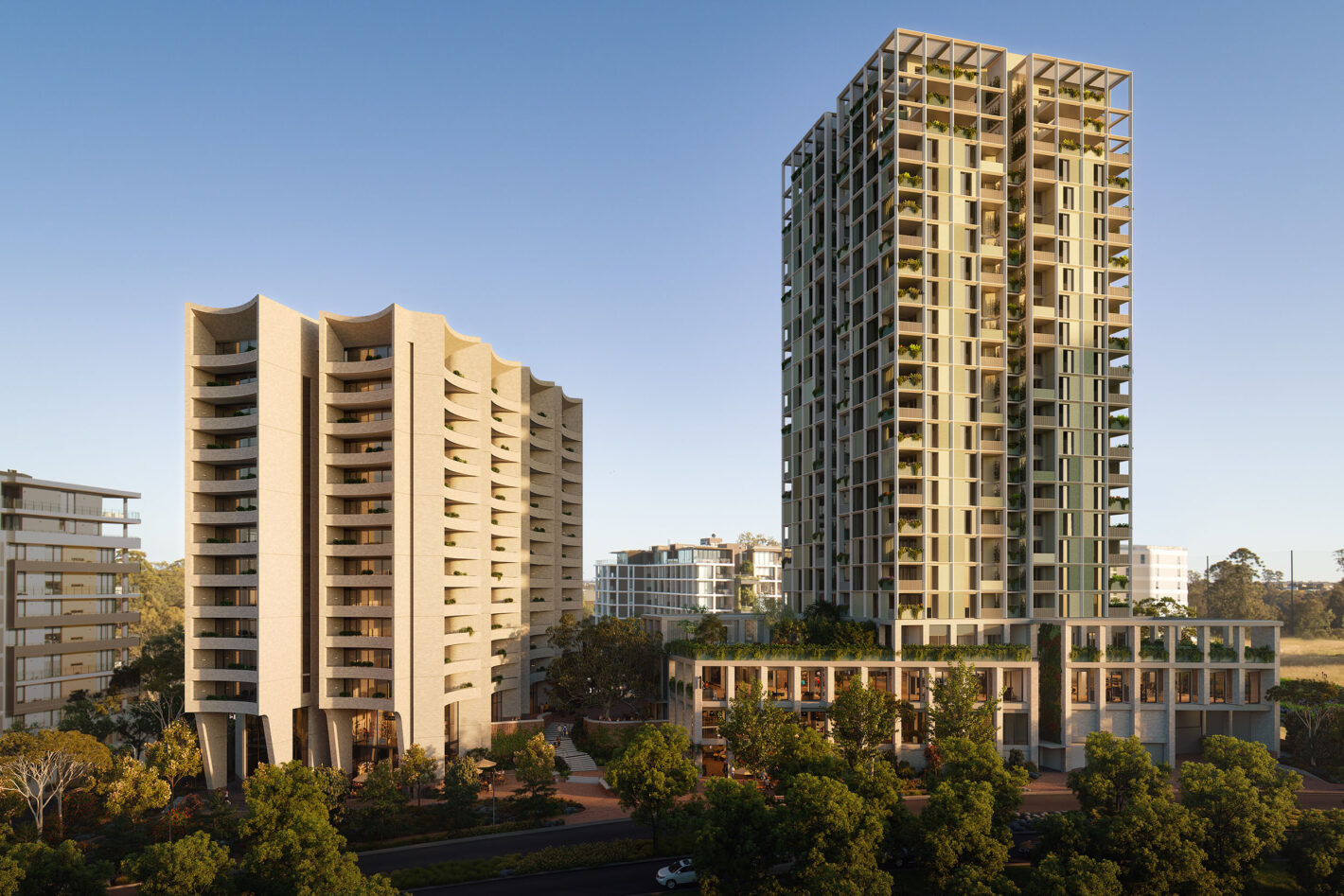Elegantly realised as a gateway building to Northwest Quarter, a new precinct in Sydney’s Hills Shire, Lacebark is one of nine buildings in the bold residential masterplan that sees the transformation of over 3.8 hectares of greenfield land into a carbon neutral hub for over 2000 residents. Taking its cues from the site’s former life as a brick manufacturing plant, Lacebark offers a sculptural presence of robust beauty. Split down its length into two distinct, slender parallel forms, the building is divided by a central corridor that provides natural light and cross ventilation to all common areas. Further reducing the building mas, these parallel forms are offset in opposite north-south directions by two circular drums that are nestled into the concave form at the northern end of each building.
Expand ContentThe masterplan proposed a building where the principal façades face east and west; this however, can be challenging in summer as apartments can overheat. As such, a study of sun angles was undertaken to inform our response and the consequential generation of a form where angled solid walls and corresponding glass walls are orientated to allow the winter sun into the living spaces, while blocking the summer sun.
Bold angled blades rise vertically on the tower form, articulating the façade while balancing access to sun and views with privacy. Terminating at the apex in a series of connected concave roof forms, these brick blades create a dramatic silhouette. Complementing the vertical thrust of the blades are generous balconies with solid brick balustrades that provide great amenity while their curved concave shapes contribute to the building’s unique sculptural expression. Recessive glazing and red Porphyry stone used for the building base imbue warmth and earthiness to the public areas.
Internal forms and finishes also allude to the site’s rich heritage as a clay brick quarry. Natural materials, for example, have been selected to work with the various forms of the building’s architecture to look as if they have been carved from clay to make up the joinery. Colour blocking is thereby used to emphasise the stacking and carving of these solid blocks and reiterate the idea of brick work.
Lacebark is an exemplar of a zero-carbon building putting back into the environment, society, and the economy through passive design initiatives, advanced technologies, and self-sufficiency. Sustainable principles include rooftop PV panels, high performance glazing, rainwater harvesting and non-potable reuse, plus electric vehicle charging and car share.
